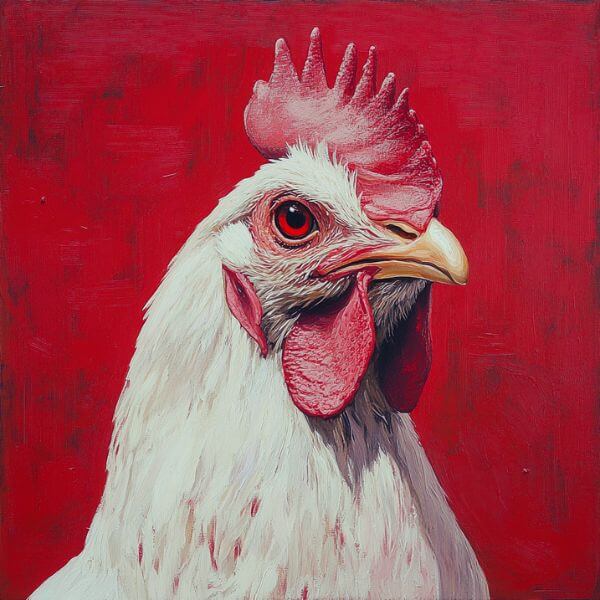Yes, but with some caveats. Chameleons can indeed eat lettuce, but it shouldn’t be the main course in their diet.
Think of lettuce as more of a side dish or an occasional snack for your color-changing pal.
Here’s a quick rundown of lettuce types suitable for chameleons:
| Lettuce Type | Suitability | Notes |
| Romaine lettuce | Good | High in nutrients, low in oxalic acid |
| Leaf lettuce | Good | Includes red and green leaf varieties |
| Butterhead lettuce | Okay | Soft texture, easy to eat |
| Iceberg lettuce | Avoid | Low nutritional value |
Nutritional value of lettuce for chameleons
Lettuce isn’t just a crunchy snack; it can offer some benefits to your chameleon:
- Vitamins: Lettuce contains vitamins A and K, which support eye health and blood clotting.
- Hydration: With its high water content, lettuce can help keep your chameleon hydrated.
- Fiber: Helps with digestion, though chameleons don’t need as much fiber as herbivores.
However, don’t be fooled into thinking lettuce is a superfood for your scaly friend.
It’s low in protein and certain minerals that chameleons need.
Risks and considerations of feeding lettuce to chameleons
Before you start tossing salad to your chameleon, consider these potential risks:
- Digestive issues: Too much lettuce can cause diarrhea in chameleons.
- Nutritional imbalance: Relying too heavily on lettuce can lead to malnutrition.
- Pesticides: Store-bought lettuce may contain harmful chemicals.
To minimize these risks, always wash lettuce thoroughly and offer it in moderation.
How to safely feed lettuce to chameleons
Follow these steps to make lettuce a safe snack for your chameleon:
- Wash thoroughly: Rinse the lettuce under cool running water to remove dirt and potential pesticides.
- Chop it up: Cut the lettuce into small, manageable pieces.
- Serve in moderation: Offer lettuce as part of a varied diet, not as the main course.
Here’s a simple feeding guide:
| Age | Lettuce Portion | Frequency |
| Baby | Tiny pieces, 1-2 leaves | Once a week |
| Juvenile | Small pieces, 2-3 leaves | 1-2 times a week |
| Adult | Larger pieces, 3-4 leaves | 2-3 times a week |
Remember, these are general guidelines. Always observe your chameleon’s response and adjust accordingly.
Balancing lettuce in a chameleon’s diet
Variety is the spice of life, even for chameleons!
While lettuce can be a part of their diet, it shouldn’t be the star of the show.
Here’s how to create a balanced meal plan:
- Offer a mix of vegetables: Combine lettuce with other safe veggies like bell peppers, carrots, and squash.
- Include insects: Most chameleons are insectivores, so crickets, roaches, and worms should make up the bulk of their diet.
- Rotate foods: Don’t serve the same things every day. Mix it up to provide a range of nutrients.
Alternative vegetables for chameleons
Lettuce isn’t the only green on the menu. Here are some other veggie options for your chameleon:
| Vegetable | Benefits | Notes |
| Collard greens | High in calcium | Feed in moderation |
| Mustard greens | Rich in vitamins | Can be slightly spicy |
| Dandelion leaves | Good source of vitamins A and C | Ensure they’re pesticide-free |
| Kale | Nutrient-dense | High in oxalic acid, feed sparingly |
Remember, some vegetables are off-limits.
Avoid feeding your chameleon avocado, rhubarb, or onions, as these can be toxic.
Chameleon species and their dietary needs
Not all chameleons are created equal when it comes to diet. Here’s a quick overview:
- Veiled chameleons: More herbivorous, they enjoy a variety of plants and insects.
- Panther chameleons: Primarily insectivores but will nibble on plants occasionally.
- Jackson’s chameleons: Mainly insectivores with little interest in plants.
Always research your specific chameleon species to provide the best diet.
Supplementation and lettuce
While lettuce can be a healthy addition to your chameleon’s diet, it shouldn’t replace proper supplementation.
Here are some tips:
- Use a calcium supplement: Dust insects with calcium powder before feeding.
- Provide a multivitamin: Offer a reptile-specific multivitamin once or twice a week.
- UVB lighting: Ensure your chameleon has access to UVB light to help with vitamin D synthesis.
Remember, supplements complement a balanced diet; they don’t replace it.
FAQs
How often can chameleons eat lettuce?
Adult chameleons can eat lettuce 2-3 times a week as part of a varied diet.
Is iceberg lettuce safe for chameleons?
While not toxic, iceberg lettuce has little nutritional value and should be avoided.
Can baby chameleons eat lettuce?
Yes, but in very small amounts. Baby chameleons need a diet higher in protein.
Should I feed my chameleon wild-caught or store-bought lettuce?
Store-bought is usually safer, as wild plants may contain parasites or pesticides.
Can lettuce replace water for chameleons?
No, while lettuce provides some hydration, chameleons still need access to fresh water.
Conclusion
So, can chameleons eat lettuce? Absolutely!
But remember, it’s just one small part of a balanced chameleon diet.
Offer a variety of foods, focusing on insects and supplementing with vegetables like lettuce.
Keep an eye on your color-changing companion, and adjust their diet as needed.
With the right balance, your chameleon will be healthy, happy, and maybe even a bit more colorful!
Remember, every chameleon is unique.
What works for one might not work for another.
When in doubt, always consult with a reptile veterinarian for personalized advice. Happy feeding!







Leave a Reply